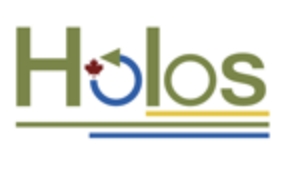
Features
Business
Policy
Holos software educates on effects of new farming practices
June 6, 2019 By AAFC

Greenhouse gas is a significant player in climate change and Agricultural and Agri-Food Canada (AAFC) scientists have developed a tool that helps mitigate agriculture’s contribution.
Roland Kroebel is an AAFC ecosystem modeller in Lethbridge, Alta. Though he insists the credit is not his, Kroebel has played a key role in developing the Holos software model from the beginning to its current 3rd version. Holos helps producers green their agriculture operations by monitoring, and adjusting farming practices to lessen greenhouse gases.
“The idea of the model is to allow producers to play around with their management strategies and to see how that could lead to a reduction of greenhouse gas emissions,” said Kroebel.
Kroebel says Holos is “an exploratory tool” and that “it’s meant as a gaming approach where a producer can try out different management practices that don’t necessarily have to be realistic.”
The goal of the model is to gain understanding of the way the system reacts to management practices and is considered more of an educational tool than a decision maker.
The Holos 3.0 came out in 2017. The updated version includes a partial economics component allowing farmers to monitor costs of different management practices. Kroebel says that the model is still in a basic level of complexity and his team will continue working on improvements as they receive feedback from other research groups and stakeholders.
One upgrade they’re looking to make is to better match the economics of the model with the greenhouse gas emissions.
“To give you an example, different ways of disposing of animal manure have different costs and emit different types and amounts of gas; but those costs don’t factor into the value of an animal. So the costs don’t discriminate in that way, but emissions do.”
Kroebel says they’re also in frequent contact with the national greenhouse gas inventory (responsible for compiling and reporting data on Canadian greenhouse gas emissions across sectors) to ensure their algorithms are aligned.
“What we’re trying to do there is create transparent results so that individual producers can understand how their farm system is part of the larger national and global context.”
On top of the producers who use Holos for their farms, Kroebel says that they are increasingly receiving requests from universities looking to bring the software into classrooms.
“It’s a great way to demonstrate how decisions on the farm trickle through the system and have multiple effects at various stages,” said Kroebel.
For more information, click here.
Print this page